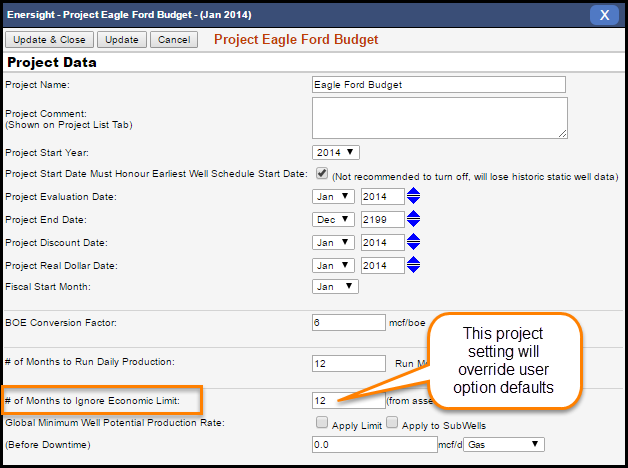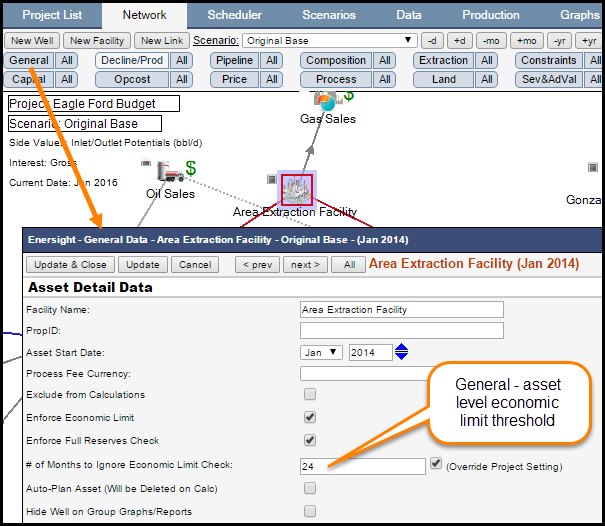Economic Limit
Enersight by default will terminate the calculation of an asset if it becomes uneconomic. The following conditions must be true for a well or facility to go uneconomic:
- Operating income (before capital and tax) must be negative
- The “Economic Limit Check” on the asset must be active
- The asset must have produced or had production pass through it at some point in the calculation
- The total downtime must be less than 50%
- The rate of take (% of production potential that is actually produced and not curtailed) must be greater than 90% (applies to wells only)
- A well must not be in a delay period between two decline segments
- It must be the second time step of the project (assets will not go uneconomic in less than 1 month)
- The calculation date must be at least the "number of months to ignore" in your options past the start of the asset
When a well or facility goes uneconomic, all assets that flow into that well or facility are also disabled. Economic limit settings exist as defaults at the project level and can be overwritten per scenario, per asset, or ignored completely in calculation settings.
Project Default Setting
Click image to expand or minimize.
In the General section of an asset, the project default can be overwritten:
Click image to expand or minimize.
You can also run calculations ignoring the economic limit completely at the scenario:

If you have a facility that ramps up over a period of time, ensure that the "number of months to ignore economic limit" is set to a high enough value for the facility to become economic. After calculating without the economic limit, and reporting the calculations at the facility level, you can see the length of time required to reach a positive operating income. You can then use this value to establish "number of months to ignore economic limit" in the project settings.
Often within models, economic limits are only applied to wells. However for facility-level operating costs that are not backallocated to wells, it may be better to specify the economic limit at the facility level. Doing this ensures that for life-of-field runs, the cut-off is better approximated and all burdens are allowed for. In this case, applying a suitable number of months to ignore the economic limit to enable ramp-up is likely prudent.
From
Enersight 2.15.2 onwards, the economic limit is now a function-enabled input and may be defined at the Project, Scenario, or Asset (well or facility) level. Note that when function enabled, the inputs at the relevant level will be used. E.g., if referencing a user data that is input as 24 at the scenario level and 12 at the well level, if the economic limit deferment condition is specified at the scenario, then it will proceed for the full 24 months before evaluating, despite the 12 inputted at the well level. Similarly if the override is active at the well level, then that 12 may apply to just that well while the rest of the scenario is only checked at 24 months.



